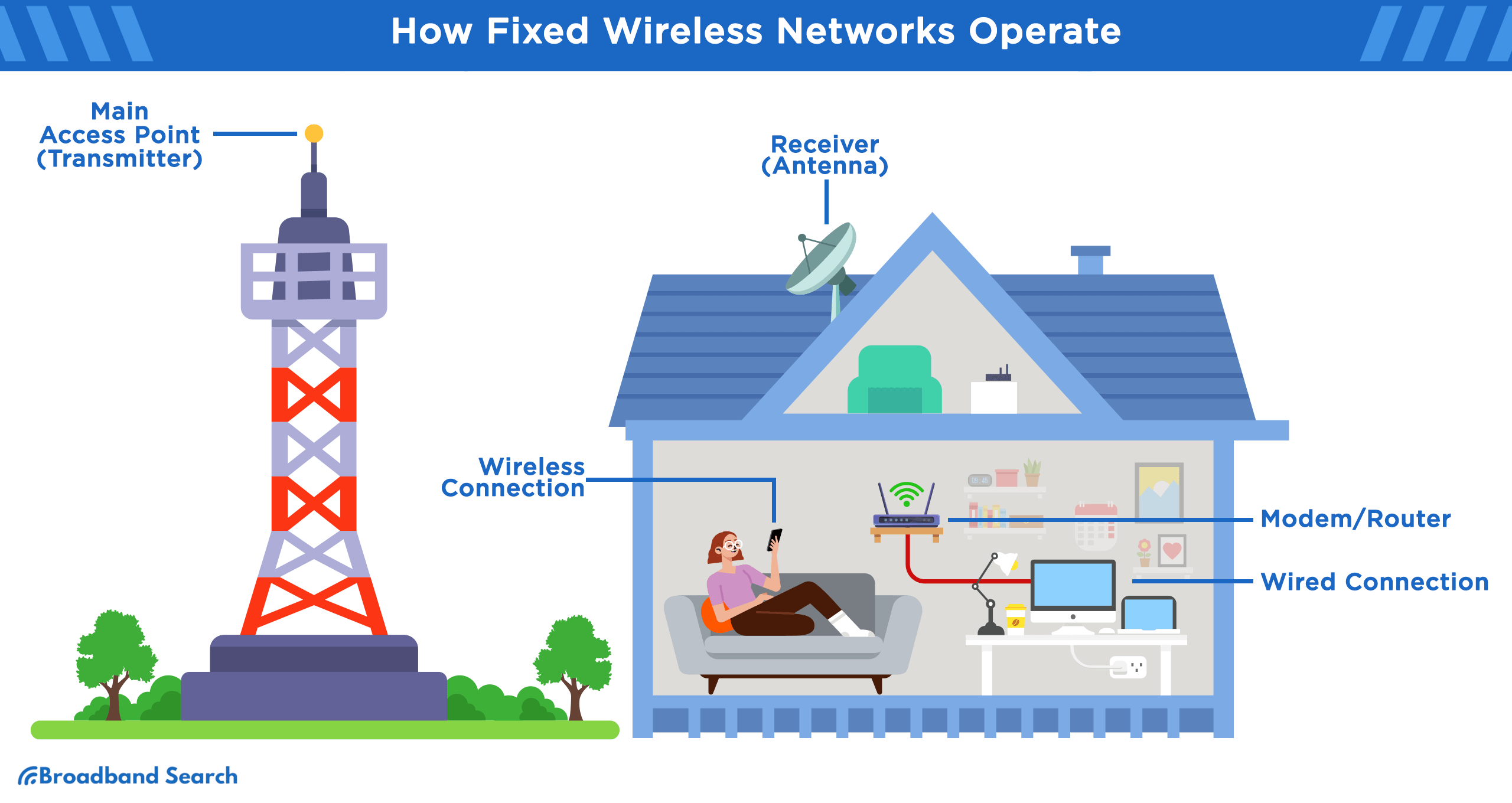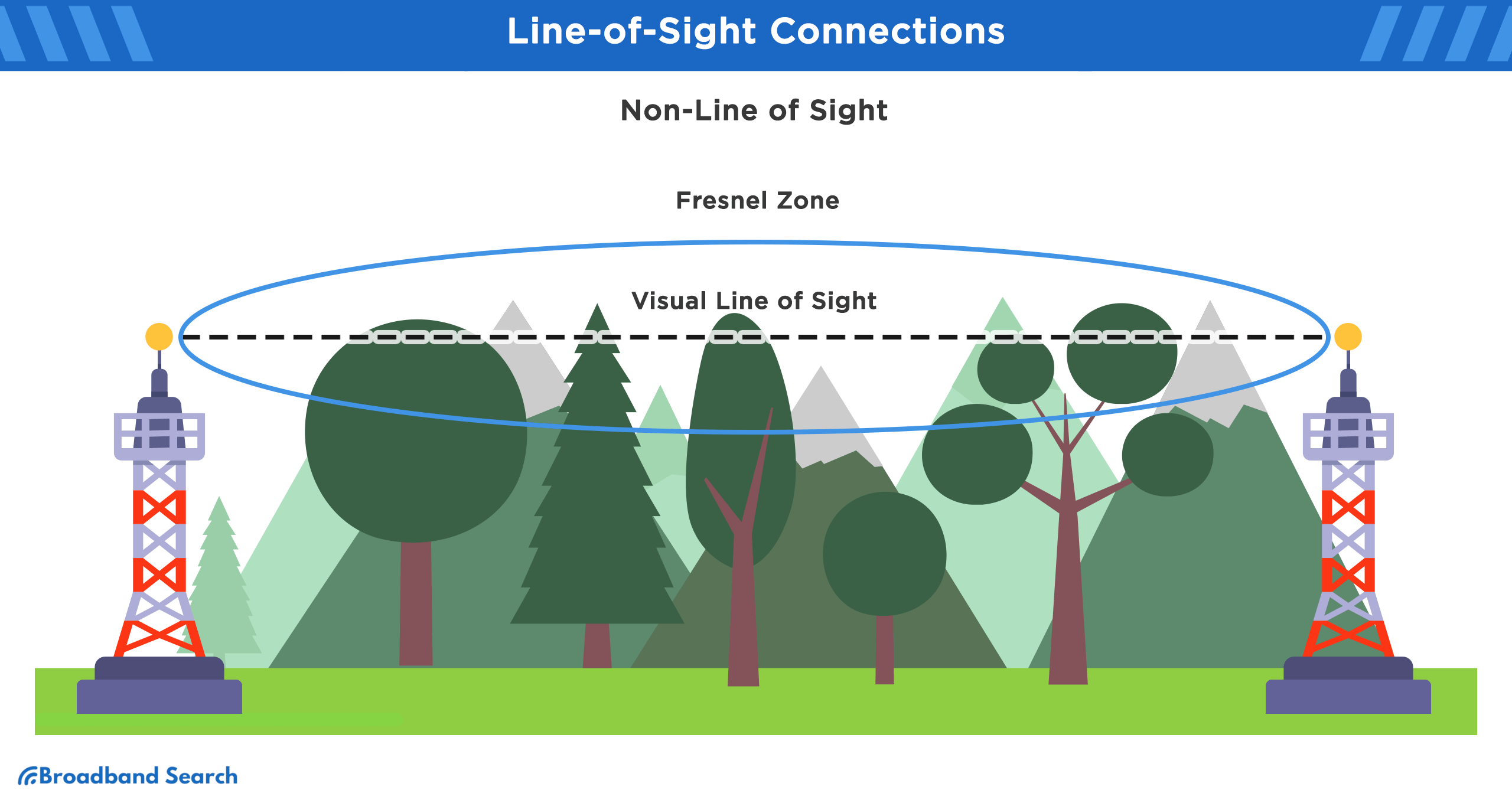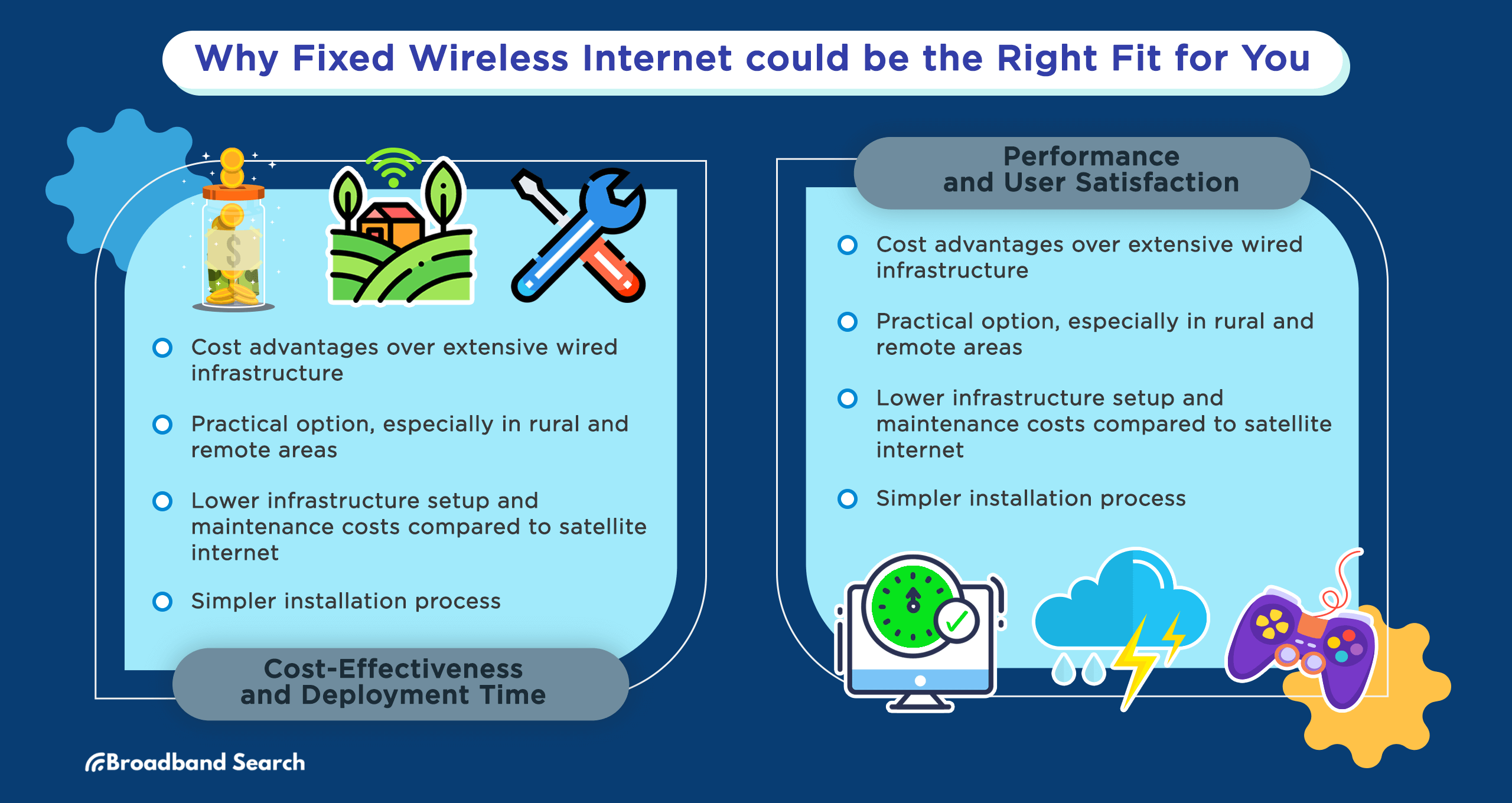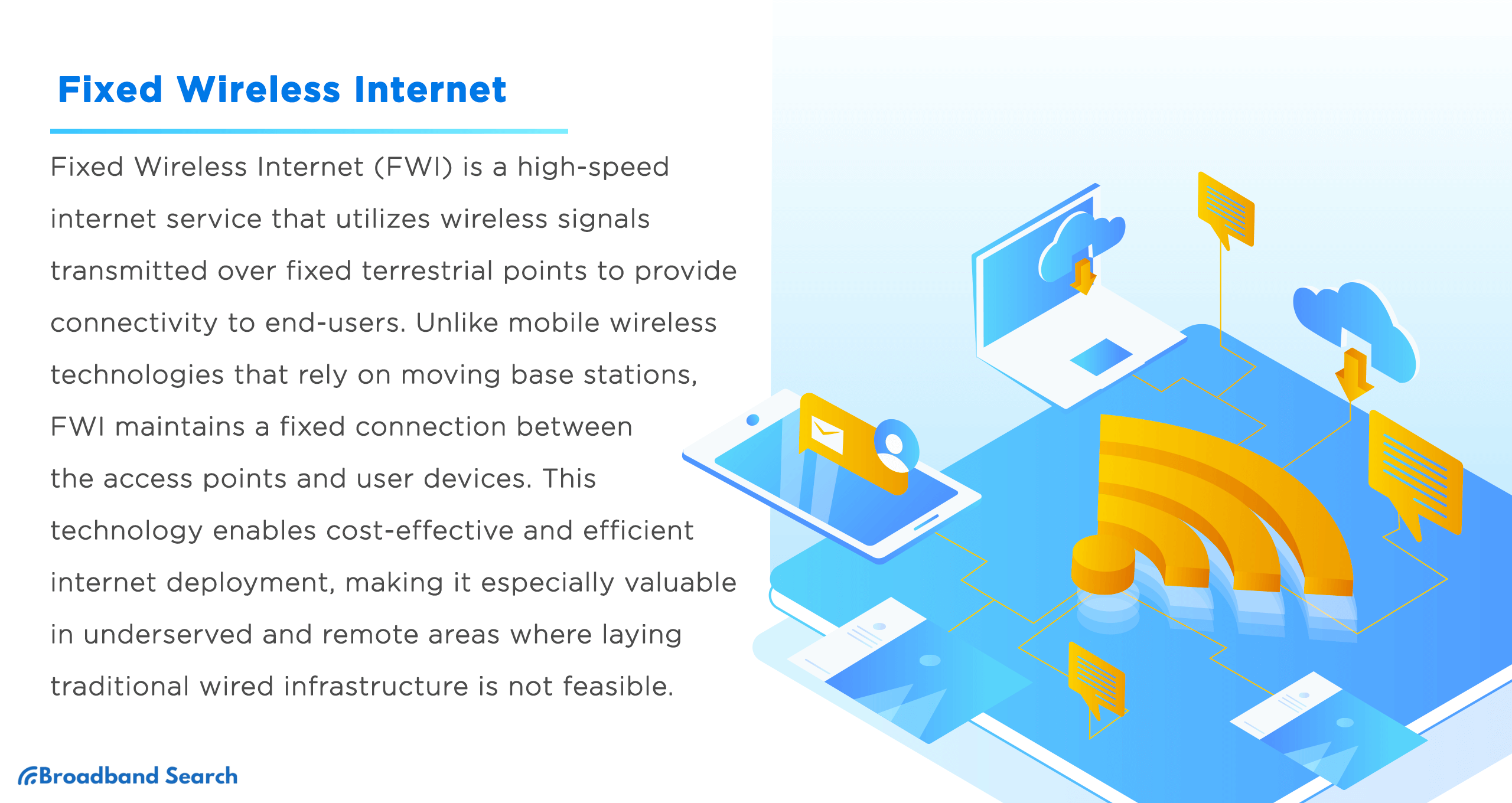Affordable and reliable internet access is of paramount importance in our increasingly digital world. It opens up opportunities for education, business, telemedicine, and communication. However, the digital divide poses a significant challenge, with underserved areas and marginalized groups lacking access to these benefits.
It is at this juncture that Fixed Wireless Internet emerges as a transformative solution. By leveraging wireless technology to provide last-mile connectivity, FWI presents a cost-effective and flexible alternative to traditional wired connections. It eliminates the need for extensive and expensive infrastructure, making it more viable for extending internet services to remote and underserved regions.
Understanding Fixed Wireless Internet
Fixed Wireless Internet (FWI) is a high-speed internet service that utilizes wireless signals transmitted over fixed terrestrial points to provide connectivity to end-users. Unlike mobile wireless technologies that rely on moving base stations, FWI maintains a fixed connection between the access points and user devices. This technology enables cost-effective and efficient internet deployment, making it especially valuable in underserved and remote areas where laying traditional wired infrastructure is not feasible.
What is 5G Fixed Wireless Access (FWA)?
5G Fixed Wireless Access (FWA) is an advanced version of Fixed Wireless Internet that harnesses the power of the 5th generation wireless technology. With 5G FWA, users can enjoy ultra-high speeds and low latency, which are comparable to or even surpassing traditional wired connections. The technology operates on millimeter-wave frequencies, offering tremendous data-carrying capacity and paving the way for various innovative applications, such as augmented reality (AR), virtual reality (VR), and the Internet of Things (IoT).
How Fixed Wireless Networks Operate
Fixed Wireless Networks rely on a network of base stations and access points strategically placed to create a wireless coverage area. These base stations act as the central hubs that transmit and receive signals to and from the customer premise equipment (CPE) installed at users' locations. The CPE includes antennas and radio transmitters, which establish a communication link with the base station. This architecture allows for reliable and high-speed internet connectivity without the limitations of physical cables.

Key Components of Fixed Wireless Internet Technology
Antennas and Radio Transmitters
Antennas are the crucial components that receive and transmit wireless signals. They are designed to operate on specific frequencies and establish a communication link with the base station. Radio transmitters work in conjunction with antennas to encode and decode data, ensuring seamless data transmission between the CPE and the base station.
Base Stations and Access Points
Base stations, also known as access points, are the backbone of Fixed Wireless Networks. They serve as the central hubs through which data is routed to and from the internet. Base stations are equipped with high-powered antennas to cover a wide area, and they are strategically positioned to create a network of coverage zones.
Customer Premise Equipment (CPE)
The CPE is installed at the user's location and acts as the bridge between their devices and the fixed wireless network. It includes an outdoor antenna that communicates with the base station and an indoor modem or router that connects to the user's devices, such as computers, smartphones, or smart TVs. The CPE allows users to access the internet wirelessly and enjoy high-speed connectivity.
Benefits of Fixed Wireless Internet
Fixed Wireless Internet (FWI) offers several advantages that make it an attractive connectivity solution:
Fast Deployment: FWI can be rapidly deployed, requiring minimal infrastructure setup compared to traditional wired networks. This speed-to-market is crucial in quickly connecting underserved areas and responding to changing connectivity needs.
Cost-Effectiveness: FWI eliminates the need for extensive trenching and cabling, reducing infrastructure costs significantly. This cost-effectiveness makes it a viable option for bridging the digital divide and providing affordable connectivity to remote and rural regions.
Scalability: Fixed Wireless Networks can easily scale their capacities to meet increasing data demands. As data consumption grows and technology advances, FWI can accommodate upgrades without major disruptions or overhauls.
Reliability: FWI technology has evolved to offer high levels of reliability and uptime. Modern systems incorporate advanced signal processing and redundancy measures, ensuring stable connectivity even in adverse weather conditions.
Flexibility: FWI is adaptable to various terrains and environments, making it suitable for both urban and rural areas. It can be deployed in challenging landscapes where laying cables is impractical.
Bridging the Urban-Rural Divide
Challenges in Rural Broadband Deployment
Deploying broadband infrastructure in rural areas poses unique challenges. These challenges include:
- Sparse Population Density: Rural areas typically have low population densities, making the return on investment for traditional wired networks less appealing to internet service providers (ISPs).
- Geographic Barriers: Rural regions often feature rugged terrains, dense forests, or large bodies of water, making it difficult to lay cables or deploy wired infrastructure.
- Long Distances: The vast distances between users and central network infrastructure result in signal degradation, affecting the quality and reliability of broadband services.
Cost-Effectiveness of Fixed Wireless in Rural Areas
Fixed Wireless Internet addresses many challenges of rural broadband deployment, making it a cost-effective solution for these regions:
- Reduced Infrastructure Costs: FWI's wireless nature eliminates the need for extensive cable installations, reducing infrastructure expenses considerably.
- Rapid Deployment: FWI can be quickly deployed without the long lead times associated with laying physical cables, accelerating the availability of internet access in rural areas.
- Flexibility in Coverage: Fixed Wireless Networks can adapt to diverse terrains, allowing ISPs to target specific areas with viable customer bases while avoiding costly infrastructure expansion.
Providing Internet Access in Remote Locations
Remote Communities and Challenging Terrains
Fixed Wireless Internet plays a crucial role in connecting remote locations and overcoming geographical challenges:
- Extending Connectivity Reach: FWI's wireless signal transmission allows ISPs to reach remote communities that are far from traditional network infrastructure.
- Adapting to Challenging Terrains: Fixed Wireless Networks can be deployed in rugged terrains and areas with limited road access, providing connectivity to regions that are otherwise difficult to reach.
Quick and Efficient Connectivity Solutions
In remote locations, Fixed Wireless Internet offers swift and efficient internet connectivity:
- Rapid Deployment: FWI can be swiftly set up, enabling timely access to critical internet services for remote communities.
- Bridging the Connectivity Gap: FWI empowers remote populations with online resources, e-learning opportunities, and access to telemedicine, improving their overall quality of life.
Disaster Recovery and Redundancy
Role of Fixed Wireless in Emergency Situations
Fixed Wireless Internet serves as a vital communication lifeline during disasters:
- During natural disasters, FWI can provide crucial communication channels when traditional infrastructure is damaged or offline.
- Emergency responders can rely on FWI to coordinate relief efforts and access real-time data for effective disaster management.
Ensuring Business Continuity and Communication During Disasters
- Businesses can maintain operations using FWI as a backup internet solution, ensuring uninterrupted services during network outages.
- Individuals can stay connected with loved ones and access emergency information through FWI when other communication methods are disrupted.
Facilitating Last-Mile Connectivity
Overcoming the Last-Mile Challenge with Fixed Wireless: Fixed Wireless Internet provides a practical solution for last-mile connectivity. FWI can reach areas where laying physical cables is cost-prohibitive or technically challenging, ensuring internet access for remote users.
Empowering Underserved Communities and Enhancing Opportunities: By bridging the last-mile gap, FWI empowers underserved communities with access to online education, job opportunities, and e-commerce, contributing to their socio-economic development.
Technical Aspects of Fixed Wireless Internet
Frequency Bands and Spectrum Allocation
Licensed and Unlicensed Spectrum
Fixed Wireless Internet operates in two types of frequency bands: licensed and unlicensed. Licensed spectrum requires ISPs to obtain regulatory permission and pay fees to use specific frequency ranges exclusively. Unlicensed spectrum, on the other hand, is available for public use without licensing requirements, making it more accessible and cost-effective for deploying FWI in many cases.
Advantages and Limitations of Different Bands
Different frequency bands offer distinct advantages and limitations for Fixed Wireless Internet:
- Lower Frequency Bands (e.g., 900 MHz, 2.4 GHz): These bands have better signal propagation characteristics, allowing signals to penetrate obstacles and cover larger distances. However, they offer lower data speeds and may suffer from higher interference due to widespread usage.
- Higher Frequency Bands (e.g., 5 GHz, millimeter-wave): Higher bands provide greater data throughput and reduced interference due to less crowding. However, they have shorter range and may face challenges with signal penetration, requiring more line-of-sight connections.
Signal Strength and Interference

Line-of-Sight (LOS) and Non-Line-of-Sight (NLOS) Considerations:
Fixed Wireless Internet relies on line-of-sight connections, where there must be an unobstructed path between the base station and the customer premise equipment (CPE). In cases where line-of-sight is obstructed (non-line-of-sight), such as by buildings or natural barriers, the signal strength and performance may be affected.
Mitigating Interference and Optimizing Performance:
To ensure optimal performance, ISPs must address interference challenges:
- Proper Antenna Placement: Careful positioning of antennas can enhance signal strength and reduce interference.
- Frequency Planning: Selecting the right frequency bands and channels can minimize interference from neighboring networks.
- Signal Boosters: Signal amplifiers and repeaters can improve signal strength in areas with weak coverage.
Data Throughput and Latency
Typical Data Speeds and Latency in Fixed Wireless
Data speeds and latency in Fixed Wireless Internet can vary based on several factors:
- Data Speeds: FWI can offer download speeds ranging from 10 Mbps to 1 Gbps, depending on the technology used, frequency band, and network configuration.
- Latency: Latency in FWI typically ranges from 10 ms to 50 ms, which is comparable to or even lower than traditional wired connections. Low latency is crucial for real-time applications like online gaming and video conferencing.
Factors Affecting Performance and Ways to Improve it
- Signal Strength: A strong and stable signal is essential for optimal performance. ISPs can install higher-gain antennas, use signal amplifiers, and optimize line-of-sight connections to improve signal strength.
- Network Congestion: In areas with many users sharing the same frequency band, network congestion can occur, leading to reduced speeds. ISPs can manage network capacity and allocate resources efficiently to mitigate congestion.
- Weather Conditions: Adverse weather, especially heavy rainfall, can attenuate wireless signals and affect performance. Redundancy measures and signal diversity can help maintain service during inclement weather.
- Interference: Interference from other wireless devices or networks can degrade performance. Employing frequency planning and using directional antennas can minimize interference and improve signal quality.
Challenges and Limitations of Fixed Wireless Internet
Line-of-Sight (LOS) Requirements
Fixed Wireless Internet (FWI) heavily relies on line-of-sight connections between the base station and the customer premise equipment (CPE). For optimal performance, there must be a clear, unobstructed path between these points. However, LOS requirements can pose challenges in certain scenarios:
- Obstacles: Buildings, trees, and other physical structures can obstruct the line of sight, resulting in degraded signal strength or complete signal loss.
- Topographical Barriers: In hilly or mountainous terrains, the natural landscape can obstruct the LOS, limiting the reach of FWI and requiring additional infrastructure planning.
- Distance: The effective range of LOS connections is limited, typically up to a few kilometers. Beyond this range, signal quality may decline, impacting data throughput and latency.
Susceptibility to Weather Conditions
FWI performance can be affected by adverse weather conditions, particularly heavy rainfall and atmospheric interference:
- Rain Fade: Heavy rain can attenuate wireless signals, leading to a temporary decrease in signal strength and potential service disruption. This phenomenon, known as rain fade, can affect reliability, especially in regions with frequent rainfall.
- Atmospheric Interference: Certain weather conditions, such as atmospheric refraction, may cause signal bending and scattering, introducing signal distortion and potential packet loss.
Potential Interference Issues
Interference from other wireless devices and networks can impact FWI performance:
- Co-Channel Interference: In densely populated areas, multiple FWI networks operating on the same frequency can cause co-channel interference, leading to reduced data speeds and degraded performance.
- Adjacent Channel Interference: Nearby wireless networks operating on adjacent frequency channels can also interfere with each other, affecting signal quality and throughput.
Bandwidth and Speed Constraints
FWI bandwidth and speed capabilities may be limited compared to wired solutions:
- Shared Resources: In areas with many users sharing the same FWI network, available bandwidth can be divided among multiple users, potentially leading to reduced speeds during peak usage times.
- Technology Limitations: Some FWI technologies, especially in lower frequency bands, may have inherent limitations in data throughput compared to high-speed fiber-optic or cable connections.
Case Studies and Success Stories
Examples of Successful Fixed Wireless Internet Implementations
Rural Community Connectivity: In a remote and underserved rural area, a telecommunications company deployed Fixed Wireless Internet to bridge the digital divide. By strategically installing base stations on elevated locations, they provided reliable internet access to previously unconnected households and businesses. The project successfully empowered the community with online education, e-commerce opportunities, and telemedicine services, catalyzing economic growth and improving the overall quality of life.
Urban Last-Mile Connectivity: In an urban setting with limited broadband options, a city government partnered with a wireless ISP to address the last-mile connectivity challenge. Fixed Wireless Internet was deployed to deliver high-speed internet access to apartment complexes and neighborhoods where traditional wired connections were difficult and costly to install. This initiative not only enhanced residents' digital experiences but also stimulated local entrepreneurship and innovation.
Impact of Fixed Wireless in Bridging the Digital Divide
Connecting Underserved Regions: Fixed Wireless Internet has been instrumental in extending internet access to previously underserved regions, both in rural and urban settings. By providing a cost-effective alternative to traditional wired networks, FWI has played a significant role in narrowing the digital divide and ensuring that more communities have equal opportunities to access online resources and services.
Educational Advancements: Schools and educational institutions in remote areas have benefited from Fixed Wireless Internet, as it enables access to online educational materials, virtual classrooms, and e-learning platforms. This technology has proven crucial in leveling the playing field for students in underserved regions, offering them the same educational opportunities as their urban counterparts.
Comparison with Other Internet Connection Technologies - Fixed Wireless vs. Wired, Satellite, and Mobile Broadband
Fixed Wireless Internet (FWI) presents distinct advantages and trade-offs when compared to other internet connection technologies, particularly in terms of cost-effectiveness, deployment time, performance, and user satisfaction.

Cost-Effectiveness and Deployment Time
Fixed Wireless Internet (FWI) offers cost advantages over laying extensive wired infrastructure, making it a practical option, especially in rural and remote areas where trenching and cable installation are expensive. FWI's rapid deployment capability allows for quicker time-to-market, bringing connectivity to underserved regions faster than wired solutions.
Compared to satellite internet, FWI has a cost advantage in terms of infrastructure setup and maintenance. Satellite internet requires expensive satellite equipment and ongoing operational costs, while FWI involves less capital expenditure and simpler installation. FWI's quick deployment makes it a viable choice for connecting remote areas, whereas satellite infrastructure requires significant lead time for launching satellites and establishing ground stations.
In comparison to mobile broadband technologies like 4G or 5G, FWI has better cost-effectiveness and deployment time. Setting up Fixed Wireless Networks involves fewer regulatory hurdles, and ISPs can cover larger areas with each base station, making it a more economical option.
Performance and User Satisfaction
Wired technologies like Fiber, Cable, and DSL generally offer higher data speeds and lower latency compared to Fixed Wireless. Wired connections are often more consistent and less susceptible to interference or weather-related disruptions. In areas with well-established wired infrastructure, users may prefer wired internet due to its consistent and high-performance nature.
Fixed Wireless generally offers lower latency and better performance compared to satellite internet. The signal distance in FWI is shorter, resulting in reduced latency, making it more suitable for real-time applications like online gaming and video conferencing. Additionally, satellite internet may experience weather-related disruptions that do not affect FWI.
Mobile broadband provides excellent mobility and coverage in urban and densely populated areas, making it suitable for users on the go. However, in terms of speed and capacity, FWI generally outperforms mobile broadband, especially in areas with concentrated user demand. Fixed Wireless can offer more stable and reliable connections due to the dedicated fixed links between the base station and users, compared to mobile networks that experience fluctuations in signal strength and speed depending on user density and cell tower proximity.
Choosing the Right Fixed Wireless Provider
Evaluating Service Plans and Data Caps
When selecting a Fixed Wireless Internet provider, consider the following factors related to service plans and data caps:
- Data Allowance: Review the data caps or data allowance offered by each provider. Some providers may offer unlimited data, while others may have data caps that restrict usage after reaching a certain threshold. Choose a plan that aligns with your data usage needs.
- Speed Tiers: Providers may offer different speed tiers at various price points. Determine the speed requirements for your online activities and select a plan that meets your performance expectations.
- Bundled Services: Some providers may offer bundled services, such as phone and TV packages, which could provide additional cost savings if you require these services.
Checking Coverage Maps and Signal Strength
Before finalizing your decision, ensure that the Fixed Wireless provider offers reliable coverage in your area:
- Coverage Maps: Request coverage maps from the provider or check their website to confirm the availability of Fixed Wireless Internet in your location. Make sure your address is within the coverage area.
- Signal Strength: Inquire about signal strength in your specific area, especially if you are in a remote or challenging terrain. A strong and consistent signal is crucial for reliable internet performance.
Customer Support and Technical Assistance
Responsive customer support is essential for a seamless internet experience. Consider the following:
- Support Channels: Check the available customer support channels, such as phone, email, or online chat. Prompt and accessible support can be invaluable in resolving issues quickly.
- Technical Expertise: Evaluate the technical expertise of the provider's support team. Well-trained technicians can efficiently troubleshoot problems and ensure smooth operations.
Understanding Contract Terms and Pricing
Review the contract terms and pricing details to make an informed decision:
- Contract Length: Determine the contract length and any early termination fees associated with the service. Be aware of any commitments you are making before signing up.
- Price Transparency: Ensure that the pricing is transparent, and there are no hidden fees or unexpected charges. Consider long-term costs and potential price increases after promotional periods.
- Service Level Agreements (SLAs): Check if the provider offers any service level agreements that outline minimum performance standards. SLAs can provide reassurance of reliable service.
Comparing Customer Reviews and Ratings
Research customer reviews and ratings to gauge user satisfaction and experiences:
- Online Reviews: Look for customer reviews on websites, forums, or social media platforms. Pay attention to common themes and trends in customer feedback.
- Independent Ratings: Consult independent review websites or consumer advocacy groups that provide impartial evaluations of internet service providers.
Future of Fixed Wireless Internet
The future of Fixed Wireless Internet holds great promise, driven by advancements in technology, spectrum allocation, and innovative deployment approaches. With the potential for affordable and efficient connectivity, Fixed Wireless Internet is poised to play a pivotal role in bridging the digital divide and bringing reliable internet access to even the most remote and underserved areas.
Advancements in Technology and Spectrum Allocation
- 5G Fixed Wireless Internet: The future of Fixed Wireless Internet is closely intertwined with advancements in 5G technology. 5G Fixed Wireless Access (FWA) offers higher data speeds, lower latency, and increased capacity, rivaling traditional wired connections. With millimeter-wave frequencies and massive Multiple-Input Multiple-Output (MIMO) antenna arrays, 5G FWA opens up possibilities for ultra-fast and reliable connectivity.
- Improved Signal Processing: Ongoing research and development in signal processing techniques will enhance the efficiency and robustness of Fixed Wireless Internet. Advanced beamforming and interference management algorithms will optimize signal delivery, leading to improved network performance in challenging environments.
- Spectrum Sharing and Dynamic Spectrum Access: Spectrum scarcity is a critical concern for wireless technologies. Innovations in spectrum sharing and dynamic spectrum access will allow Fixed Wireless Internet to coexist harmoniously with other wireless systems, optimizing spectrum utilization and improving network efficiency.
Potential for Cheap Fixed Wireless Solutions
- Low-Cost Hardware: As technology advances and economies of scale improve, the cost of Fixed Wireless Internet hardware, including base stations, antennas, and customer premise equipment, is likely to decrease. This reduction in hardware costs will make Fixed Wireless solutions more affordable and accessible to a broader range of users.
- Efficient Deployment Strategies: The ease and speed of Fixed Wireless Internet deployment make it a cost-effective option, especially in underserved and remote areas. By leveraging efficient deployment strategies and avoiding expensive infrastructure, ISPs can provide cheap Fixed Wireless solutions to communities without robust internet access.
- Leveraging Existing Infrastructure: Future Fixed Wireless solutions may make use of existing infrastructure, such as utility poles and streetlights, to minimize the need for additional infrastructure investments. Leveraging these resources can further reduce costs and enhance the viability of cheap Fixed Wireless deployments.
The Bottom Line
Fixed Wireless Internet (FWI) presents a viable solution to bridge the digital divide. Its cost-effectiveness, rapid deployment, and scalability make it an attractive option for providing affordable and widespread connectivity, particularly in underserved areas. Despite challenges like line-of-sight requirements and susceptibility to weather, FWI has successfully connected rural communities, empowered urban last-mile access, and facilitated communication during emergencies. With continuous technological advancements, including 5G Fixed Wireless Access, FWI's performance is expected to improve further, ensuring reliable and high-speed connectivity for all.
To achieve a more connected and inclusive society, stakeholders must invest in and support Fixed Wireless Internet initiatives. Governments, telecommunications companies, and policymakers must prioritize FWI deployment in underserved regions, collaborating with ISPs to offer affordable service plans. By embracing Fixed Wireless Internet, we can create a future where everyone, regardless of location, has equal access to education, commerce, and opportunities for growth. Together, we can bridge the digital divide and foster a more prosperous and equitable digital world for all.
FAQ
What is Fixed Wireless Internet (FWI)?
Fixed Wireless Internet is a high-speed internet service that utilizes wireless signals transmitted over fixed terrestrial points to provide connectivity to users. Unlike mobile wireless technologies, FWI maintains a fixed connection between access points and user devices, offering cost-effective and efficient internet deployment in underserved and remote areas.
How does Fixed Wireless Internet bridge the digital divide?
FWI addresses the digital divide by offering affordable and widespread connectivity to areas with limited or no access to traditional wired internet. Its cost-effectiveness and rapid deployment capabilities make it a viable option for connecting underserved regions, providing opportunities for education, healthcare, and economic development.
What are the challenges of Fixed Wireless Internet?
Fixed Wireless Internet faces challenges such as line-of-sight requirements, susceptibility to weather conditions, potential interference, and bandwidth constraints. However, ongoing technological advancements and improved signal processing techniques are continually enhancing FWI's performance and reach.
How can stakeholders support Fixed Wireless Internet initiatives?
Governments, telecommunications companies, and policymakers can invest in FWI infrastructure, prioritize deployments in underserved areas, and collaborate with ISPs to offer affordable service plans. By embracing FWI, stakeholders can contribute to a more connected and inclusive society, bridging the digital divide and ensuring equitable access to the benefits of the digital age for all.
How does Fixed Wireless Internet compare to other internet connection technologies?
Fixed Wireless Internet has distinct advantages over other technologies. It offers quicker deployment and cost savings compared to wired options like DSL, Cable, and Fiber in remote areas. Additionally, FWI provides lower latency and better performance than satellite internet, and it outperforms mobile broadband in terms of speed and capacity.

